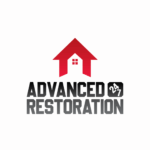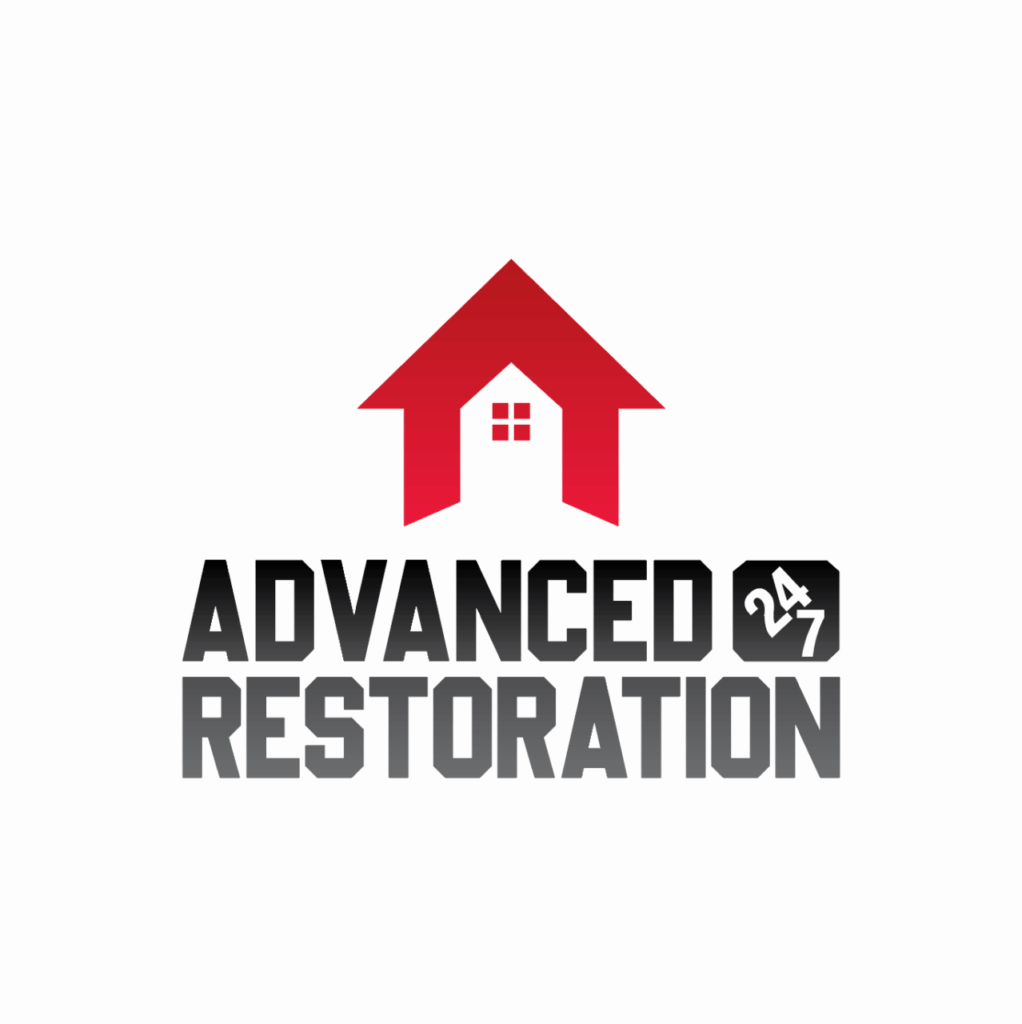Imagine your home as a thriving garden, with each room representing a delicate flowerbed. Now, picture a sudden storm hitting your sanctuary, leaving behind a mess that threatens the beauty and safety of your haven.
Just as a skilled gardener tends to the aftermath of a storm, the sanitation process in sewage cleanup aims to restore your home to its former glory.
But what exactly does this process entail? How does it ensure that your living space is not only clean but also free from any potential health hazards?
Step by step, let’s explore the intricate and vital process that brings back the freshness and safety you deserve.
Safety Precautions During Sanitation Process in Sewage Cleanup
To ensure your safety during sewage cleanup, follow these essential precautions.
Sewage cleanup can be a hazardous task due to the presence of various hazardous materials. It’s crucial to wear the appropriate personal protective equipment (PPE) to minimize the risk of exposure to harmful substances.
First and foremost, always wear gloves when handling sewage. Gloves provide a barrier between your skin and the hazardous materials present in sewage, reducing the chances of contamination. Additionally, wear protective clothing such as coveralls or waterproof suits to shield your body from direct contact with the sewage.
In addition to wearing gloves and protective clothing, it’s essential to wear a face mask or respirator. Sewage can emit harmful gases and particles that can be detrimental to your health when inhaled. By wearing a mask or respirator, you can protect your respiratory system from these hazardous substances.
Furthermore, make sure to properly dispose of all contaminated materials. Use sealed bags or containers to prevent the spread of bacteria and other harmful microorganisms. Dispose of these materials in designated areas or follow local regulations for safe disposal.
Lastly, maintain good hygiene practices throughout the cleanup process. Wash your hands thoroughly with soap and water after handling sewage, even if you are wearing gloves. This will help prevent the spread of any potential contaminants.
Initial Assessment and Evaluation
Before beginning the sewage cleanup process, it’s important to conduct an initial assessment and evaluation of the affected area. This step is crucial to ensure the safety of all individuals involved and to effectively address any health hazards that may be present. Here are some key items to consider during the initial assessment:
- Identify the extent of the damage: Assess the area to determine the scope of the sewage contamination. This includes identifying the affected rooms, surfaces, and objects.
- Evaluate health hazards: Determine the potential health risks associated with the sewage backup. Sewage contains harmful bacteria, viruses, and other contaminants that can pose serious health risks if not properly handled.
- Check for structural damage: Inspect the affected area for any signs of structural damage caused by the sewage backup. This includes checking for weakened walls, floors, or ceilings that may need immediate attention.
- Assess the need for personal protective equipment (PPE): Determine the level of PPE required for the cleanup process. This may include gloves, masks, goggles, and protective clothing to minimize exposure to hazardous materials.
- Document the findings: Keep detailed records of the initial assessment, including photographs and notes. This documentation will serve as a reference throughout the cleanup process and may be necessary for insurance purposes.
Containment and Isolation of Affected Areas
To ensure the safety of all individuals involved and prevent further contamination, containment and isolation of the affected areas is a crucial step in the sewage cleanup process. Containment measures and isolation techniques play a vital role in minimizing the spread of harmful pathogens and reducing the risk of exposure to hazardous substances.
When dealing with sewage cleanup, it’s essential to establish a clear boundary around the affected area. This can be achieved by using physical barriers such as plastic sheeting or barricades to prevent cross-contamination. By isolating the contaminated area, you protect yourself and others from potential health hazards and prevent the spread of odors and bacteria to unaffected spaces.
In addition to physical barriers, it’s important to implement proper ventilation systems. This helps in controlling the airflow and preventing the circulation of contaminated air. Negative air pressure machines can be used to remove the contaminated air from the affected area and prevent it from spreading to other parts of the building.
During the containment and isolation process, it’s crucial to wear personal protective equipment (PPE) to minimize the risk of exposure to hazardous substances. This includes gloves, masks, goggles, and disposable coveralls. PPE acts as a barrier between you and the contaminants, ensuring your safety while working in the affected area.
Regular monitoring and inspection of the containment measures and isolation techniques are essential to ensure their effectiveness. This includes checking for any breaches in the barriers, maintaining proper airflow, and ensuring the integrity of the PPE. Any deviations or issues should be addressed promptly to prevent further contamination and ensure the safety of all individuals involved.
Removal of Solid Waste and Debris
After effectively containing and isolating the affected areas, the next crucial step in the sewage cleanup process is the removal of solid waste and debris. This step is essential to ensure thorough cleaning and to eliminate health hazards associated with sewage contamination. Here are five key aspects related to the removal of solid waste and debris:
- Safety precautions: Before starting the removal process, it’s important to wear protective gear such as gloves, masks, and waterproof boots. These precautions help prevent direct contact with the waste and reduce the risk of exposure to harmful pathogens.
- Segregation of waste: Proper segregation of solid waste is crucial for effective disposal. Different types of waste, such as organic and inorganic materials, should be separated to facilitate appropriate disposal methods.
- Disposal methods: Solid waste and debris from sewage cleanup require correct disposal methods. Local regulations and guidelines should be followed to determine the most appropriate disposal method, such as landfill disposal or incineration, in order to minimize environmental impact.
- Cleaning tools: Various cleaning tools and equipment, such as shovels, buckets, and heavy-duty garbage bags, are used for the removal of solid waste and debris. These tools help ensure efficient and thorough cleaning of the affected area.
- Decontamination: After the removal of solid waste and debris, the affected area needs to be properly decontaminated. This involves cleaning and disinfecting surfaces to eliminate any remaining pathogens and reduce the risk of further contamination.
Disinfection and Decontamination Procedures
Proper disinfection and decontamination procedures are crucial in ensuring a safe and clean environment after the removal of solid waste and debris in sewage cleanup. These procedures involve the use of disinfection protocols and sanitization methods that effectively eliminate harmful bacteria, viruses, and other pathogens that may be present in the sewage.
Drying and Moisture Control Measures
Ensure the effectiveness of the disinfection and decontamination procedures by implementing proper drying and moisture control measures in sewage cleanup. After cleaning up the sewage, it’s crucial to remove any remaining moisture to prevent the growth of mold and bacteria. Here are some essential drying and moisture control measures to consider:
- Moisture Extraction: Use specialized equipment, such as wet/dry vacuums or pumps, to extract standing water and excess moisture from affected areas. This step is vital to minimize the risk of further damage and contamination.
- Dehumidification Techniques: Employ dehumidifiers to reduce the humidity levels in the environment. High humidity can prolong the drying process and promote the growth of mold and mildew. Dehumidifiers help to accelerate the drying process and create an inhospitable environment for microbial growth.
- Proper Ventilation: Ensure adequate air circulation by opening windows, using fans, or employing air movers. Good airflow helps to expedite the drying process and remove any lingering odors.
- Monitoring Moisture Levels: Regularly measure and monitor moisture levels in affected areas using moisture meters. This allows you to track the progress of the drying process and identify any areas that require further attention.
- Insulation Removal and Replacement: In cases where insulation has been saturated with sewage, it’s essential to remove and replace it. This helps prevent the growth of mold and ensures that the affected area is properly dried and insulated.
Restoration and Repair of Affected Surfaces
To restore and repair surfaces affected by sewage, it’s important to address any structural damage and remove any contaminated materials. The restoration techniques used in sewage cleanup focus on bringing back the affected surfaces to their pre-damage condition. This involves repairing any cracks, holes, or other damages caused by the sewage. Surface repairs are crucial to ensure a clean and safe environment, as well as to prevent further damage or health hazards.
One of the first steps in the restoration process is to thoroughly clean the affected surfaces. This includes scrubbing, disinfecting, and deodorizing to eliminate any remaining contaminants and odors. Specialized cleaning solutions are used to ensure effective sanitation.
After the cleaning process, any structural damage needs to be addressed. This may involve repairing or replacing damaged drywall, flooring, or other materials. In some cases, professionals may need to remove and replace entire sections of walls or flooring to ensure proper restoration.
Once the structural damage has been repaired, the focus turns to restoring the aesthetics of the affected area. This may involve repainting walls, refinishing floors, or replacing damaged fixtures. The goal is to create a visually pleasing and functional space that’s free from any signs of sewage damage.
Post-Cleanup Inspections and Follow-Up Steps
Now that the affected surfaces have been restored and repaired, it’s essential to conduct post-cleanup inspections and follow-up steps to ensure the thoroughness of the sewage cleanup process. Taking these additional measures will provide peace of mind and reassurance that your home or property is truly safe and free from any lingering contaminants.
Here are some important post-cleanup tasks to consider:
- Post Cleanup Documentation: Before concluding the sewage cleanup process, it’s crucial to document all the work done. This documentation serves as evidence of the thoroughness of the cleanup, and it can be useful for insurance purposes or potential future property transactions.
- Inspection of Restored Surfaces: A detailed inspection should be conducted to verify that all affected surfaces have been properly restored. This includes checking for any signs of mold growth, moisture, or structural damage. If any issues are detected, they should be promptly addressed to ensure the long-term safety and integrity of the space.
- Air Quality Testing: It’s also important to check the air quality after the cleanup to ensure the removal of any airborne contaminants. This can be done through professional testing or by monitoring for any lingering odors or respiratory symptoms.
- Customer Satisfaction Survey: Your satisfaction is of utmost importance, and conducting a customer satisfaction survey allows you to provide feedback on the quality of the cleanup process. This feedback helps the cleanup team improve their services and ensures that your needs were met to your satisfaction.
- Follow-Up Maintenance: Regular maintenance is essential to prevent future sewage backup or contamination issues. It’s recommended to schedule routine inspections and maintenance checks to address any potential problems before they escalate.
Review
So there you have it, folks! The wonderful world of sewage cleanup. Who knew it could be such a glamorous job?
From the initial assessment to removing solid waste, let’s not forget the thrilling disinfection and decontamination procedures.
But hey, it’s not all fun and games; someone has to do it, right?
So next time you’re knee-deep in sewage, just remember, it’s all part of the glamorous life of a sanitation superhero.
Advanced 24/7 Restoration’s mission is to provide unparalleled care and support to our valued clients. Delivering the best solutions for your property restoration needs. Our vision is to be the top-rated damage restoration company in Denver, known for our exceptional services, professionalism, and dedication to customer satisfaction. Water damage, fire damage, flood damage, and more.
- This author does not have any more posts


